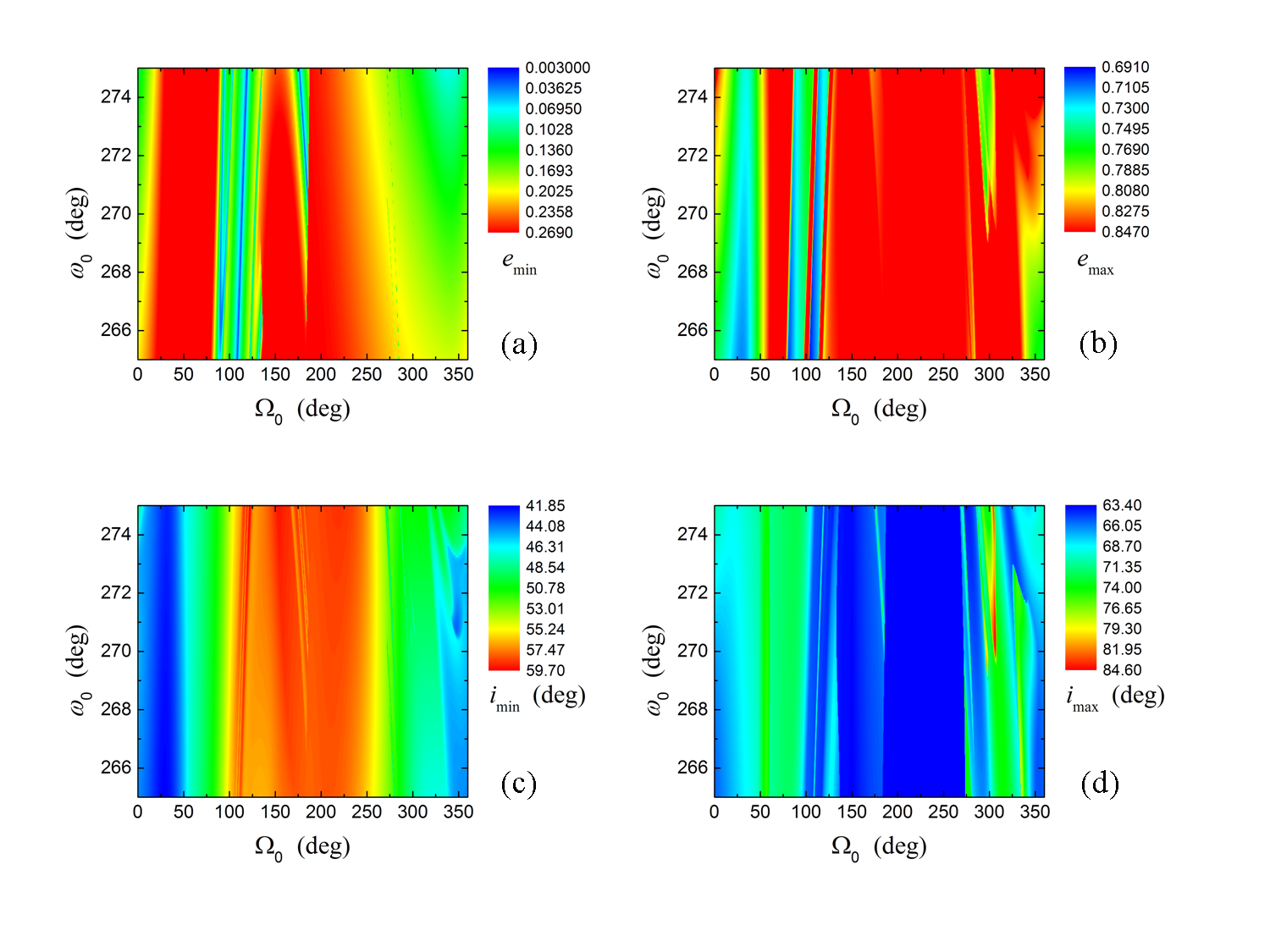Tundra-type orbits are elliptical geosynchronous orbits located at the critical inclination. At present, three Sirius satellites possess this type of special orbit. In view of their orbital peculiarity, the dynamics of Tundra-type orbits involve two celebrated resonance problems in artificial satellite theory, 1:1 tesseral resonance and critical inclination. Past research on Tundra-type orbits has been somewhat limited to constellation design and orbit control strategy. Although Tundra-type orbits have already been adopted by three Sirius satellites, until now little research has been carried out on their long-term dynamical evolution.
We investigated the long-term dynamical evolution of Tundra-type orbits to obtain orbital characteristics qualitatively or quantitatively, based on simplified and reasonable dynamical models. The effects of Earth’s gravitational potential and lunisolar perturbations on the orbits are clarified. The long-term dynamical evolution of the three Sirius satellites in Tundra-type orbits are studied in particular. Numerical calculations with the exact perturbation models are performed to verify the theoretical analysis and to provide more information about the dynamical evolution of the orbits. It is found that:
(i) The effect of Earth’s gravitational potential on the dynamical evolution of Tundra-type orbits lies in the 1:1 tesseral resonance that dominates the intermediate-period motion (semi-major axis, resonant angle) (with a timescale of several years for the three Sirius satellites) of the orbits approximately. This 1:1 tesseral resonance takes the leading role in determining the orbital evolution within the first several years from the initial epoch. In other words, the effect of the tesseral resonance is distinctive in the initial stage.
(ii) The effect of lunisolar perturbations on the dynamical evolution of Tundra-type orbits dominates the long-timespan evolution of the orbital eccentricity and inclination within the timescale of around 100 years. Lunisolar perturbations take the leading role in the long-timespan evolution with a timescale of up to 100 years.
(iii) The eccentricity and inclination of the three Sirius satellites in Tundra-type orbits have large variations in their amplitudes over the course of the long-term dynamical evolution, and this can cause the orbital decay of the satellite, destroying the original design characteristics of the orbit.
(iv) Lunar precession, the initial longitude of the ascending node, the initial argument of perigee, and the initial epoch have observable influences on the long-term evolution of the eccentricity and inclination of Tundra-type orbits . In particular, certain values of the initial longitude of the ascending node can decrease the orbital lifespan significantly at the end of a mission , as stated in Zhao et al. for satellites in near-circular and inclined geosynchronous orbits. For certain values of the initial longitude of the ascending node, the orbital lifetime can even fall below 20 years.

Fig. 1. For the different values of the initial longitude of the ascending node and the initial argument of perigee, the contours of the minimum and maximum eccentricities and the minimum and maximum inclinations in the 100 years evolution process for nominal Tundra-type orbits subjected to the second zonal harmonic and the second-order harmonics of lunisolar perturbations based on the simplified dynamical model with lunar precession (the orbit is supposed to decay when the altitude of the perigee is below 100 km).
The work by Ming-Jiang Zhang, Chang-Yin Zhao*, Yong-Gang Hou, Ting-Lei Zhu, Hong-Bo Wang, Rong-Yu Sun and Wei Zhang has been published in Advances in Space Research.
Please see the link for more details: http://www.sciencedirect.com/science/article/pii/S0273117716305944.
This work is supported by the Key Program of the National Natural Science Foundation of China (Grant No. 11533010) and the Youth Program of the National Natural Science Foundation of China (Grant No. 11603078).
